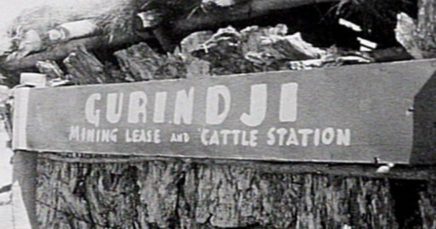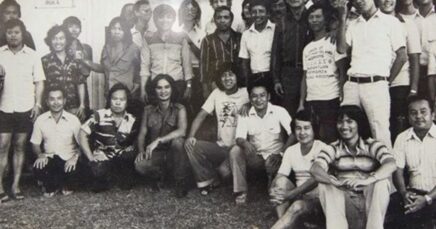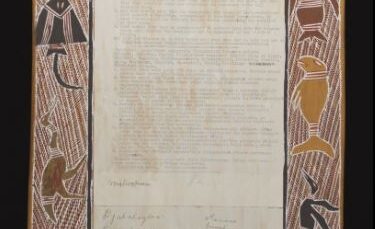
‘When it comes to the living standards of working people I know this: without Tom McDonald we would have neither the superannuation system nor the minimum wage system we have now.’ – Bill Kelty
On the 16th of April 2022 we lost a legend of the Australian union movement. After a lifetime of winning for workers, former Building Workers’ Industrial Union (BWIU) leader and ACTU Vice President Tom McDonald passed away peacefully. Tom was 95.
Across his decades-long career as a union activist, organiser, and leader, Tom was completely dedicated to empowering workers to take action to win improvements in their lives at work, and in broader society. He campaigned for dignity and respect, he campaigned for peace, and he campaigned for a better world for all.
Australia is a better, fairer, more decent place because of Tom.
Read ACTU Secretary Sally McManus and former ACTU Secretary Bill Kelty’s tribute to Tom in The New Daily here.
In the joint memoir Tom co-authored with Audrey McDonald, a legendary union and progressive leader in her own right, Tom gave voice to what motivated him through his career as a unionist:
‘From day one to the end of my union life there were always three fundamental values that I saw as central to the struggle – the dignity and rights of working people, the future of humanity, and empowering the working class. My very first organising tasks back in 1950 were about these three basic values. When I fought for building workers to have decent toilets it was about the dignity and rights of workers. When we fought for peace and to “Ban the A-Bomb” it was about the future of humanity. And when we recruited new members it was about empowering the working class. These values must continue to be at the centre of the struggle, and that struggle will continue until we have a society that places people before profit.’

Tom’s working life began at the famed Cockatoo Island Docks during the Second World War where he was employed as an apprentice. Workplace activism came early to him. When apprentices were neglected onsite and not being taught the skills of their trade, Tom organised a protest of the young workers there for the right to gain meaningful experience and training. Soon after, he joined a protest of apprentices for the right to technical training during the day – successfully replacing the system where apprentices were expected to toil all through the day and study their trade all through the evening.
After the war, Tom left Cockatoo Island and joined the construction industry. He was recruited as a union organiser by the legendary Pat Clancy (then a BWIU organiser, later State and National Secretary of the union) in 1950. This began a decades-long association between Clancy and McDonald that would result in defining wins for workers. Both would ascend to positions of leadership in the BWIU, and both were active and committed members of the Communist Party of Australia.

As a BWIU organiser, Tom threw himself into the tough work of organising suburban sites which were often far-flung and where only a few workers were employed. His passion for workplace action and his belief that union members should define and direct union action shone through even at this early stage.
Matters were made more difficult for the BWIU due to the fact that on a federal level, the union had been deregistered in 1948, and would not be re-registered until 1963 (though the NSW Branch was registered). Amid the clamour of the Cold War and the difficulties of de-registration, matters were worsened when a breakaway union colluded with employers to try and split workers away from the BWIU. But union members were dedicated to their union – represented in the hard and passionate work Tom and other organisers were doing on worksites all over the state.
None of this distracted Tom or his mentor Pat Clancy from their fundamental mission: empowering BWIU members to take action and win improvements in the industry.
Tom and Pat also understood that the workers’ movement was one of internationalism and solidarity. This inspired Tom to take action for peace, against racism, and for gender equality. He was part of the BWIU’s famous sponsoring of the African-American singer and Civil Rights activist Paul Robeson’s tour of Australia. This included Robeson singing to BWIU members constructing the Sydney Opera House – the first performance at the venue. This commitment also inspired Tom’s active contribution to the peace movement, the campaign against disarmament, protests against the war on Viet Nam, and support for the movement against Apartheid and for racial justice in South Africa.

In 1953, Pat Clancy was elected as BWIU NSW Secretary, and Tom as the NSW branch’s Assistant Secretary. Under their leadership the union launched a series of substantive campaigns to clean up the safety standards in the industry throughout the 1950s.
Then, as now, construction work was extremely dangerous, and many employers disregarded the safety of their workers in favour of speed and profitability. Construction workers came together in the BWIU under Tom and Pat’s leadership to take a serious stand for the right to work safely and to go home at the end of the shift.
On one site, workers were forced to work one-handed while hanging over the edge of a building. Tom’s direct intervention representing the workers on site managed to stop this dangerous practice and led to the NSW Department of Labour and Industry setting up a new special unit to investigate external scaffolding. In 1956, the union won wet weather pay to stop workers from losing pay when the weather made it too dangerous to work (this was later expanded to include pay for days of excessive heat that made work impossible).
Under Tom and Pat’s leadership, the union pursued a series of campaigns that intended to win what was dubbed the “Family Welfare Concept”. As Tom later explained, this “involved a step-by-step approach to eliminating situations where building workers received no pay.”
Rather than a singular issue, this involved a long-term plan to win a series of rights and recognitions for building workers that guaranteed their rights to pay in sickness and health across their careers. This would allow them to build and raise families in some security. That made clear that as much as these workers contributed to their trade with their skills and expertise – and what a massive contribution it was! – they also had the right to live as human beings outside of the workplace.
Major victories in advancing this “Family Welfare Concept” that BWIU members won under Tom and Pat’s leadership included:
· Accident pay at a full day’s rate.
· Long service leave.
· Four weeks annual leave.
· Paid sick leave.
· Payment for public holidays.
· Redundancy pay.
· Superannuation.

Of all these epochal victories, the 1971 campaign for accident pay/workers’ compensation would most often be recalled by Tom as a crowning achievement by the union. He later called it “probably the most militant, best organised and extensive dispute in Australia’s building industry.”
At this time, injured workers did not receive full pay while they recuperated, but a lesser compensation payment set at half a day’s rate. Unions wanted workers to receive a rate equivalent to their full-time pay. The BWIU brought other unions in the industry together to campaign.
After three building workers were injured and denied access to their full pay, the strike began. This wasn’t just about the money, it was about dignity and protection. Injured workers were not to be discarded.
Tom later recalled the meeting of BWIU members were the decision to strike was made:
‘My speech centred on the hardship being suffered by three of their workmates, each of whom I was able to name. Because I had done my homework, I was able to speak in detail about their serious financial problems. I knew the workers would be moved by these stories and many of them would remember going through similar experiences when they were off injured. As anticipated, a demand emerged from the meeting that [the company they worked for] pay these workers accident pay. The workers demanded an immediate reply from the employer and when the deputation reported back to the meeting that the claim had been rejected, they decided to go on strike.’
After two weeks, workers at all the major sites in the Sydney CBD were on strike. On May Day, stop work meetings were held across NSW and voted for a general strike. Employer opposition was strong, but the determination of the building workers was much stronger.
There were major marches, small-scale worksite actions, and the staffing of pickets on construction sites across the city. A delegation of working women marched to the Master Builders Association’s HQ, chastising its leaders for their disregard towards injured workers.
After three weeks of the general strike, the building unions won their claim. Injured workers were to be paid their full wage and treated with the dignity and respect they deserved.

Following this victory, in 1973, Tom was elected as BWIU NSW Secretary after Pat Clancy moved to head up the national union. In this position Tom was a leading force in the BWIU’s campaign for long-service leave in the industry (meaning workers were paid for leave based on service to the industry rather than an individual employer), its campaign for four-weeks annual leave with leave loading, its campaign for 10-days paid sick leave, and contributed to the national union’s 1975 campaign for national paid rates. Somehow, he also found the time to lead a sit-in protest at the NSW Parliament House against public service sackings.
In 1976, Tom shifted position to branch President of the BWIU. It reflected the esteem he was held in by his union’s members, but was also driven by a need to take on a less onerous position than state secretary. He had literally been working himself into ill-health in the service of his members.
But some of his biggest contributions to union and Australian history were still to come.
In 1982 Tom was elected as BWIU National Assistant Secretary, a move to national prominence that was cemented by his election as BWIU National Secretary in 1985. In this period he was the leading force behind the negotiation of a superannuation scheme for the construction industry – one that led to the creation of BUSS (now CBUS), and created a model for the national superannuation scheme that was later legislated into the universal system we have today.
Following the extraordinary accomplishment of industry superannuation in his industry, Tom became increasingly influential in the national movement. He was elected to the ACTU Executive in 1985, and was elected as Vice President in 1989. He joined the international fact-finding mission that led to the Australia Reconstructed report, and was a leading opponent of the attempt to introduce a GST.
In 1989, Tom was instrumental in the union movement’s plan, spearheaded by Bill Kelty and the ACTU, to lift the overall minimum wage and protect workers in a weaker bargaining position. This required a restructure of every award to raise the basic rate to the level achieved by the BWIU – but this could only be successful if the BWIU’s members forewent a wage increase. Showing immense courage and solidarity, Tom and the BWIU membership agreed, benefitting millions of lower-paid workers over the long term.

He was a leading proponent of the move in the late 1980s for union amalgamation, even preparing the ACTU Executive’s 1989 report on the topic which he presented to the ACTU Congress. He entered the BWIU into negotiations with other building unions about amalgamation. Despite an initial set back in 1989 when the proposed amalgamation with FEDFA stalled, Tom persevered, guided by a vision of the strong industry-wide union that could take on the challenges of the globalised economy and win for workers. From 1991-1994 his efforts were rewarded with the amalgamation process that created the CFMEU.
Tom retired from his position as BWIU National Secretary in 1991 – but he remained a beloved and cherished leader of the movement. In the decades that followed he continued to pursue causes, take action, think deeply, and strategise for the union movement’s future.
He was extraordinarily generous in sharing his time and wisdom with younger comrades, most notably in his role as a mentor in the ACTU’s “Organising Works” programme. From 1994 to 2019 he was an elder in the programme, participating directly in the training of over a thousand new organisers.
As Sally McManus and Bill Kelty explained in their tribute to Tom:
“This involved Tom’s participation in the training of thousands of, mainly young, union organisers right across the country from 1994-2019, travelling on the train from his home on the central coast to trades hall in Sydney or elsewhere. This enormous contribution has no equivalence in the union movement and has an ongoing and incalculable legacy.
So after a working life of contributing to the union movement he spent the next quarter of a century lovingly watching over it and pouring all that he had been taught from his life as a unionist into the generations who were just starting out, like he had as an apprentice on Cockatoo Docks. Tom and Audrey were both driven to pass on the lessons they had learnt, because they still believed in the power of the working class. Tom believed in the greater “we” and about building collective strength, one of his most famous sayings was one passed onto him as a young trade unionist – “the trade union movement is a “we” and not an “I” movement”. Tom became a leader of the communitarians. Right until his final years he was writing books, producing YouTube videos and podcasts, gifting to future generations and the union movement his wisdom. He was always at hand for a quiet word of advice and encouragement.”

Across his long career Tom built worker power.
He built new institutions to protect workers, and to enhance their quality of life.
When he entered the union movement, the construction industry was devastatingly dangerous with very few protections for the safety of workers. Though the dangerous nature of the industry endures, Tom’s work was integral to ensuring the substantial improvements in safety and conditions that has led to untold thousands of construction workers returning safely home from their shifts.
He fought for the dignity and essential humanity of the working person.
He fought for justice.
He fought for peace.
He fought for us.
We mourn and remember Tom, and most importantly, we pledge to continue his struggle, and to build on his remarkable legacy.
The Australian union movement extends our deepest condolences to his partner Audrey, to Daren, Nivek, Casey and to all Tom’s comrades.

Find Out More
Activist Masterclass podcast series with Tom McDonald.
You can find out more information on this series here: https://www.deliberatelyengaging.com.au/activist-masterclass/
This Masterclass series will inspire, educate and assist activists to become workplace and community leaders. Moderated by Professor Ed Davis, it draws on the wisdom of union elder Tom McDonald and many past and current Australian union leaders to discuss key topics of enduring value for the union movement.

Thanks to the McDonald family for allowing the use of historical images in preparing this tribute.



